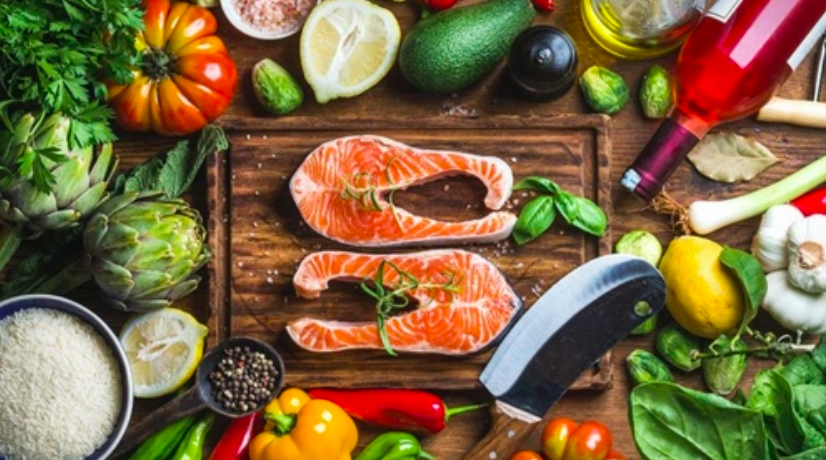Doctor Le Thi Thanh Vui, from the National Institute of Hematology and Blood Transfusion at Bach Mai Hospital, explains that the blood system, with billions of red blood cells, white blood cells, and platelets constantly circulating, is the flow of life, nourishing every cell and protecting the body from disease. The blood-making process, also known as hematopoiesis, is a biological activity that takes place continuously in the bone marrow.
To produce enough quality blood cells, the body requires a diverse and adequate supply of micronutrients. A deficiency in any of these elements can lead to blood disorders, the most common of which is anemia, seriously affecting health and quality of life.
Iron
Iron is the core component of hemoglobin, the protein in red blood cells that carries oxygen from the lungs to the tissues and carries carbon dioxide from the tissues back to the lungs to be expelled. Iron deficiency leads to anemia, causing symptoms such as fatigue, pale skin, pale mucous membranes, shortness of breath during exertion, rapid heartbeat, dizziness, reduced ability to concentrate, and increased risk of infection.
Iron is abundant in red meat (beef, veal, lamb), animal liver (pork liver, chicken liver), heart, kidneys, poultry (chicken, duck, especially dark meat), fish (tuna, mackerel, salmon), and shellfish (clams, oysters, mussels).
Iron is also found in dark green leafy vegetables (spinach, kale, broccoli, water spinach, amaranth), legumes (lentils, chickpeas, black beans, soybeans and soy products like tofu), nuts and seeds (pumpkin seeds, cashews, sunflower seeds), whole grains, and iron-fortified products (flour, breakfast cereals).
 |
Foods like salmon are good for blood production. Photo: *Everyday Health*. |
Vitamin B12
Vitamin B12 plays an essential role in DNA synthesis, necessary for the division and maturation of red blood cells in the bone marrow. It is also crucial for maintaining the normal function of the nervous system, including the formation of the myelin sheath that protects nerve fibers. Vitamin B12 deficiency can cause megaloblastic anemia with symptoms similar to iron deficiency anemia but often accompanied by neurological problems such as numbness in the extremities, loss of balance, memory impairment, and even irreversible nerve damage if not treated promptly.
Vitamin B12 is mainly found in animal products: meat (especially liver and kidneys); fish and seafood (salmon, tuna, sardines, clams, oysters); eggs (especially the yolks); milk and dairy products (cheese, yogurt).
Folic acid
Similar to vitamin B12, folic acid is vital for DNA and RNA synthesis, thus essential for cell division and multiplication, including blood cells in the bone marrow. Folic acid deficiency also causes megaloblastic anemia, similar to vitamin B12 deficiency, but without nerve damage. Folic acid is especially important for pregnant women to prevent neural tube defects in the fetus.
Sources include dark green leafy vegetables (spinach, kale, asparagus, broccoli); legumes (lentils, chickpeas, black beans); fruits (oranges, avocados, bananas); animal liver; whole grains; and folic-acid-enriched products (bread, breakfast cereals).
Other important nutrients
Besides iron, vitamin B12, and folic acid, several other vitamins and minerals also contribute to maintaining a healthy blood system:
Vitamin C: Not only enhances iron absorption but is also a potent antioxidant, protecting blood cells from damage. This vitamin is abundant in citrus fruits, strawberries, kiwi, bell peppers, and broccoli.
Vitamin B6: Participates in the synthesis of heme, a component of hemoglobin. Sources include chicken, fish, potatoes, bananas, and legumes.
Copper: Essential for iron metabolism and hemoglobin formation, mainly found in liver, oysters, nuts, and dark chocolate.
Vitamin A: Important for the development and differentiation of hematopoietic stem cells in the bone marrow. Foods rich in this vitamin include liver, fish oil, eggs, milk, yellow-orange vegetables (carrots, sweet potatoes, pumpkin), and dark green leafy vegetables.
Vitamin E: An antioxidant that protects red blood cell membranes, found in vegetable oils, nuts, and avocados.
Protein: A building block of hemoglobin and other proteins in blood plasma, mainly found in meat, fish, eggs, milk, legumes, and nuts.
For a healthy blood system, Dr. Vui recommends a balanced and varied diet. Ensure adequate intake of all food groups, including protein, carbohydrates, fats, vitamins, and minerals. Prioritize fresh, natural foods. Increase the consumption of iron-rich foods, vitamin B12, and folic acid.
Drink enough water because water makes up most of the blood plasma volume and helps blood circulate better. Limit processed foods and fast food, as these foods are often nutrient-poor and may contain substances that are not beneficial to health.
Have regular health checkups. If you have symptoms of anemia, such as prolonged fatigue, pale skin, dizziness, or belong to a high-risk group (pregnant women, vegetarians, people with digestive diseases), see a doctor for examination, blood tests, and specific advice.
Le Nga












